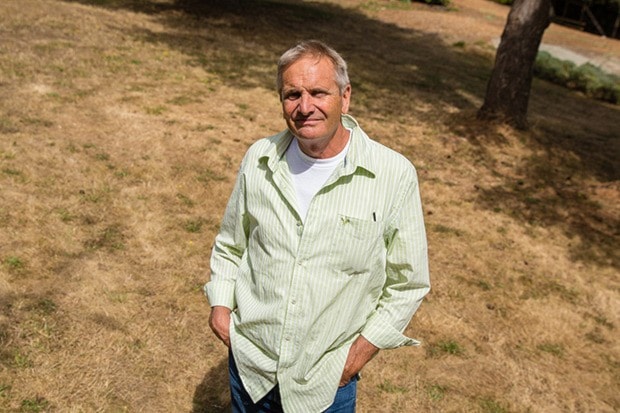It’s been a hot summer in Saanich, and as a result of water restrictions, lawns throughout the district have been drying up, despite homeowners’ best efforts to beat the heat.
Your lawn won’t go green no matter how much you preen, but a mid-summer drought is no reason to pout, according to Illarion Gallant of Rusnak Gallant Ltd. The landscape architect said homeowners shouldn’t worry about their lawns drying up three months of the year – it’s only natural for grass to dehydrate in this kind of weather.
“A lawn doesn’t die when it goes brown, it just goes dormant,” he said. “If a client was coming to me and asking me, I’d say, ‘Go with the reality of nature and allow your grass to go dormant.’”
While he admits it’s not the nicest thing for some homeowners to hear, Gallant said it’s really the only option in this severe heat, with the current drought in B.C. prompting harsher restrictions for the most green-thumbed citizens.
“Usually what happens in a drought situation, you’re allowed to water new lawns, water new plants – you can’t even do that in Vancouver now. The drought situation’s very serious.”
Gallant said attitudes about how a lawn should look are somewhat generational, with older homeowners seeing lush lawns as a status symbol while younger residents more or less go with the flow (or lack of).
“The 1960s middle class esthetic was green lawns, and that meant fertilizer and a lot of water,” said Gallant. “The new middle class esthetic is either long grass or you go brown.”
When designing a garden, Gallant said homeowners can opt for longer grass that tends to withstand drought better because it provides more shade on the soil surface and has a lower rate of evapotranspiration, the process by which water is transferred to the atmosphere by evaporation from soil and by transpiration from plants.
“If you’re out in the sun and you have long hair, your scalp is a little cooler than if you had a shaved head – it’s the same thing when you have a mowed lawn. You don’t really have shade on the soil surface, so you have a higher rate evapotranspiration.”
When preparing to lay down a new lawn, Gallant said it’s better to have 12 to 18 inches of soil to create optimum conditions for water retention.
“It creates enough of a planting medium to hold moisture, but also gives it an opportunity for rooting,” he said. “Eighteen inches is luxury, 12 inches is achievable.”
Gallant also recommended against using a lot of clay, noting homeowners should opt for a larger amount of sand.
“In soil, you have to have some percentage of clay, like 18 or 19 per cent,” he said. “But in my lawns, I like to have 60 to 65 per cent sand to give it structure.”
However, for existing lawns, the options are limited short of tearing up the lawn and putting in more drought-resistant grass. For the practical gardener, Gallant said it’s best to just ride out the heat wave.
“Of course you can water it as much as you can before you get into water restrictions, but what happens is with the heat, the water table goes down and it goes brown. For established gardens… there’s not much you can do.”
jacob.zinn@saanichnews.com
